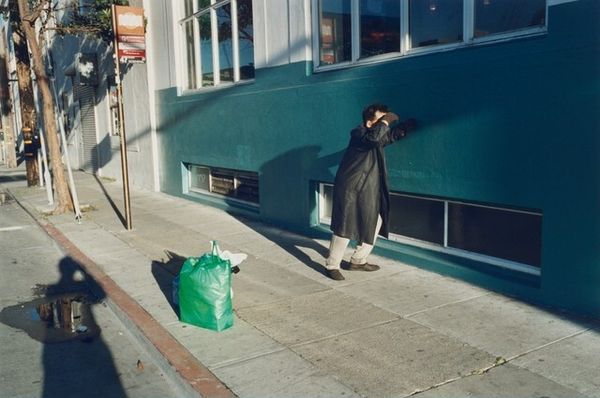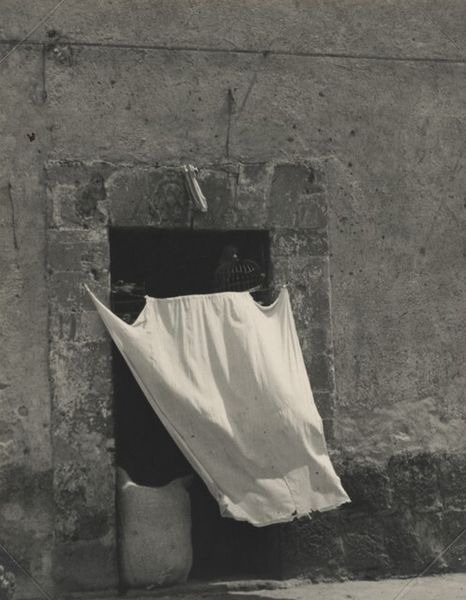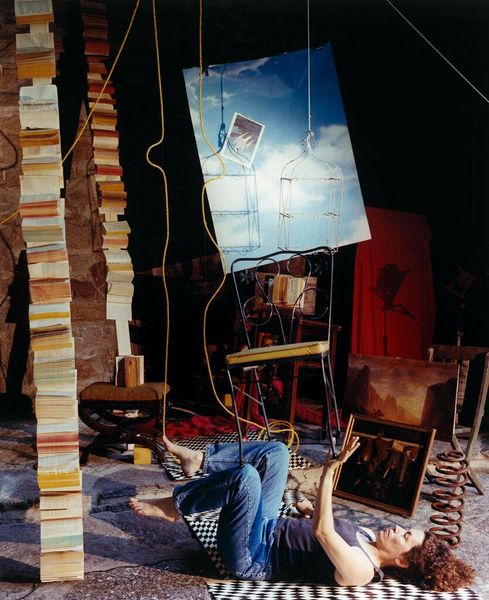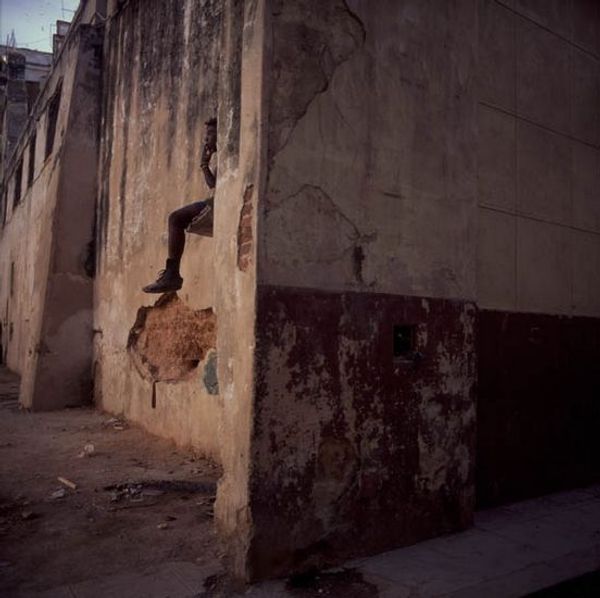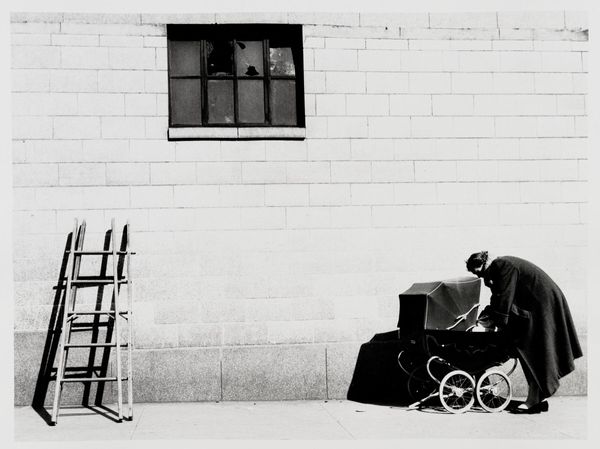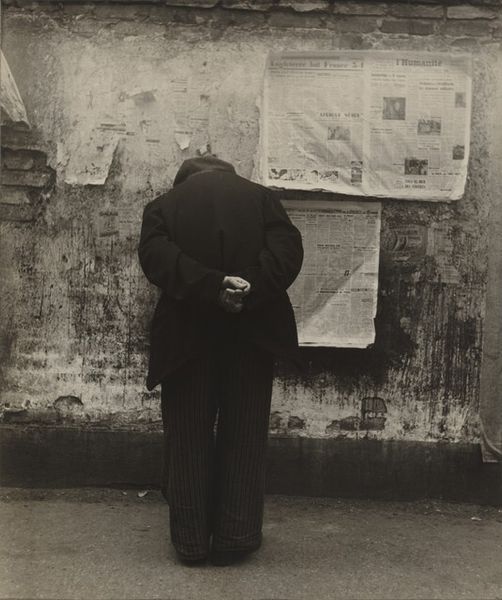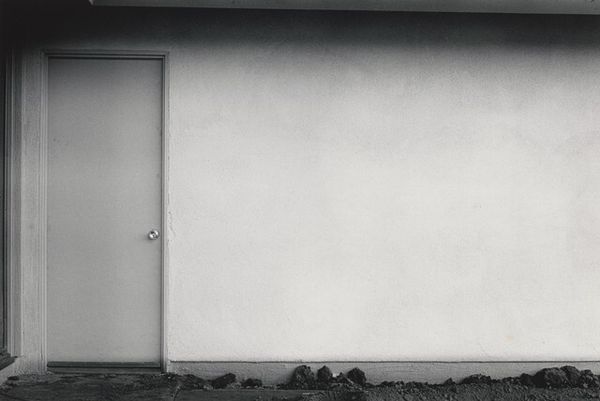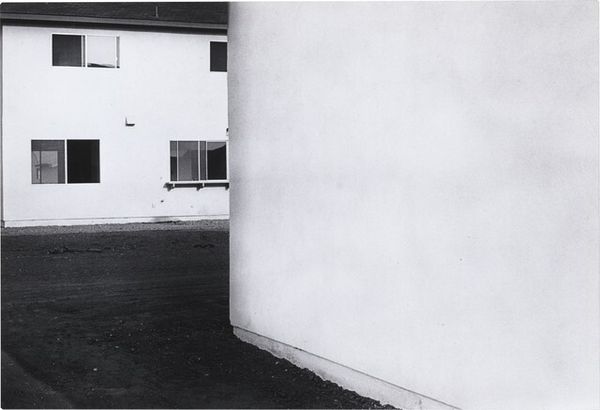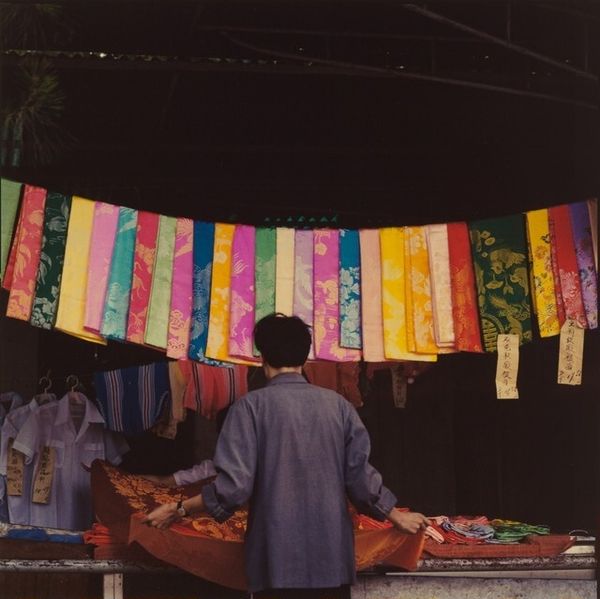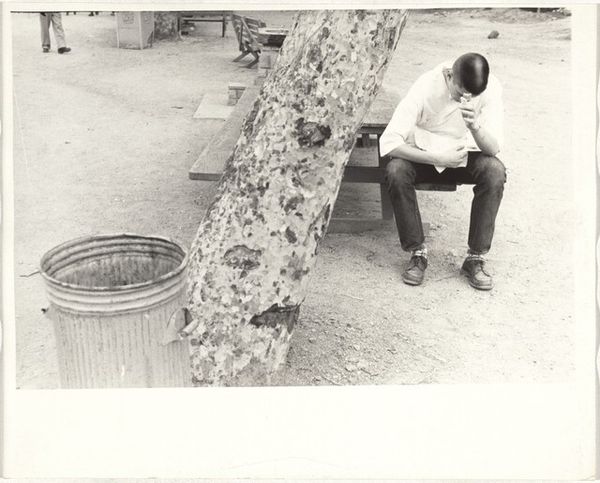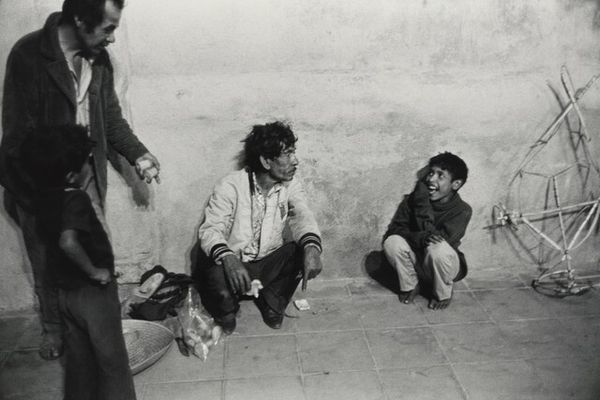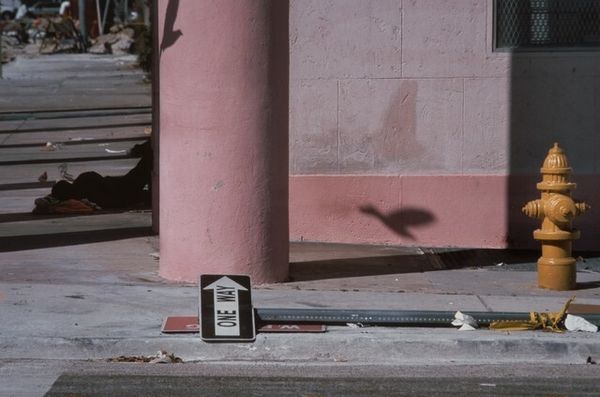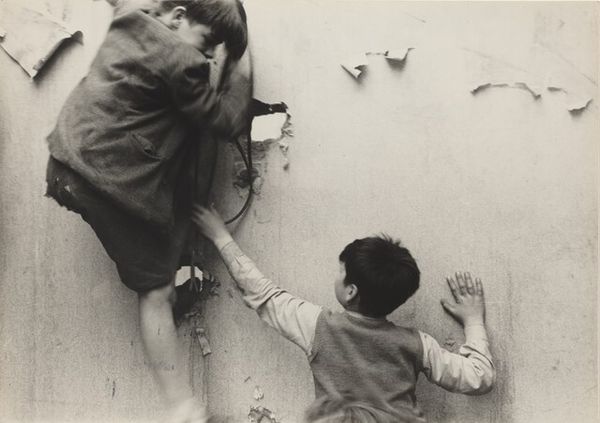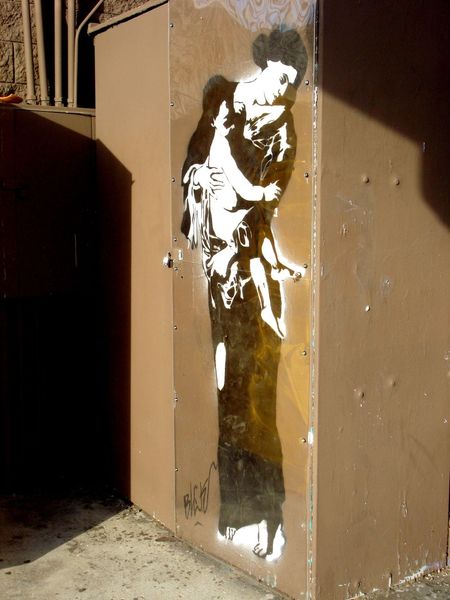
Copyright: Miguel Rio Branco,Fair Use
Curator: This compelling piece is "Bandeira Negra," or "Black Flag," a 1991 photograph by the Brazilian artist Miguel Rio Branco. It’s quite striking, isn't it? Editor: It is. My initial reaction is unease. The stark contrast of light and shadow, combined with that aggressive black mark on the wall... it feels like a visual scream. Curator: Indeed. Rio Branco's work often addresses social issues, and he frequently documents marginalized communities in Brazil. This photograph, in particular, I think, engages with themes of urban decay and the power of informal expression. Editor: The "Black Flag" itself seems symbolic. Flags often represent nations or ideologies, but here it's reduced to this chaotic abstraction. It evokes a sense of rebellion or perhaps a rejection of established structures. What do you think about how this meaning relates to Rio de Janeiro's historical context of art as protest? Curator: Absolutely. In Brazil's sociopolitical climate of the time, graffiti served as a potent medium of expression. Artists used public spaces to communicate with each other and the state, bypassing traditional institutions. I wonder if that could also relate to the role of censorship, if he worked at that junction. Editor: Perhaps, but it could be that the image is an act of transgression; art as vandalization is also about control, freedom, and authorship. Then you have the white sack. What could that stand for? Curator: A body? Editor: Maybe. Overall, there is something raw and urgent. The texture of the wall, the harsh lighting – it all contributes to the feeling of immediacy. Curator: What interests me, from a more curatorial standpoint, is how Rio Branco challenges the traditional documentary photography. He combines realism with a very deliberate artistic vision. Editor: This approach resonates deeply with its commentary about art's power. Rio Branco masterfully communicates complex ideas about identity and place through striking symbolic representations. Curator: So while the flag might suggest political conflict, for me, that sack indicates poverty, social inequity, and maybe more about the realities that Brazil needs to face. Editor: Indeed, Rio Branco presents something far beyond the literal scene, making a potent statement.
Comments
No comments
Be the first to comment and join the conversation on the ultimate creative platform.
